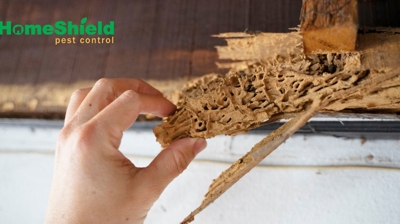
Sacramento Bed Bug Control
Expert bed Bug Removal in San Diego, Los Angeles, and Orange Counties
Along with our pest control services, we also specifically handle bed bug infestations. Bed bugs are small insects that feed on the blood of warm-blooded animals. They have this in common with mosquitoes, though bed bugs do not have wings. Scientifically known as Cimex lectularius (Cimicidae), bed bugs are often found in the nesting areas of birds, bats, and also humans. Because they are often found in beds, sofas, and other human “nesting” areas, they have earned the common name of “bed bug.”
How To Recognize A Bed Bug Infestation
The easiest way to recognize a bed bug infestation is if anyone starts to complain about bug bites that happen during the night. Bed bugs are most active about an hour before dawn, and bed bug bites are often mistaken for mosquito bites.
Both bed bugs and their eggs are visible to the human eye. Eggs will look like small poppy seeds, and adults can grow to approximately 1/4? in length and have an oval, flattened shape. Bed bugs do not like the sunlight and often hide in cracks and crevices during the day.
Signs of a Bed Bug Infestation
Detecting a bed bug infestation early can save you from significant discomfort and prevent the issue from worsening. Bed bugs are elusive pests that often go unnoticed until their presence becomes overwhelming. Recognizing the signs of an infestation is essential for taking swift action. Bed bugs primarily feed on human blood, usually during the night, and their bites can cause itching, redness, and swelling. In addition to physical bites, there are several other indicators that you might have a bed bug problem. These pests leave behind various telltale signs, and being aware of these can help you identify an infestation early.
Below are some common signs that you may have bed bugs in your home:
- Unexplained Bites: Small, red, itchy bites that appear in clusters or lines on exposed skin, typically noticed after waking up.
- Blood Stains: Tiny reddish-brown stains on sheets, pillowcases, or mattresses, resulting from crushed bed bugs after feeding.
- Fecal Spots: Dark, rusty-colored spots on bedding, mattresses, and furniture caused by bed bug excrement.
- Shed Skins: Pale yellow exoskeletons left behind as bed bugs molt during their growth stages.
- Musty Odor: A distinctive sweet or moldy smell produced by the bed bugs' scent glands, noticeable in severe infestations.
- Live Bed Bugs: Visible small, oval-shaped, reddish-brown insects hiding in mattress seams, bed frames, headboards, and nearby furniture.
If you observe any of these signs, it is crucial to act quickly. Bed bugs can reproduce rapidly, leading to a more extensive infestation if not addressed promptly. Contacting a professional pest control service is recommended to effectively eliminate bed bugs and prevent their return. Regular inspection and maintaining a clean environment can also help in early detection and control of these persistent pests.
How To Effectively Get Rid Of Bed Bugs
Since they are so small and can hide in so many places, bed bug extermination can be a lengthy process. Extermination will happen much quicker if you work with a pest control company that has experience eliminating bed bugs. Call HomeShield today and we can help you get started eliminating these nasty pests.
Bed Bug Extermination & Treatment Options
The following are some ways that you can expedite the extermination process:
- Launder bedding and garments at 120 degrees Fahrenheit or hotter to kill bugs and eggs.
- Try vacuuming up the infested areas, being careful to get all cracks and crevices.
- Scrape bedding and other infested areas as eggs are hard to dislodge.
- Work with a pest control professional to treat all infested areas and other areas likely to be infested.
- Be sure to treat any former bird or bat nesting areas, as they may also be infested.
For more suggestions on how to exterminate your bed bug problem or to get started with a professional bed bug exterminator in California or the surrounding area, call us now.
Contact us online or give us a call at (888) 720-3618 to schedule an appointment for our bed bug control services in Sacramento today!

Our california Pest Control Services
In California, we provide reliable home pest control and commercial pest control solutions.
Bed Bug Control For San Diego, Los Angeles, Orange, & Sacramento County
At HomeShield Pest Control, we offer bed bug control services in all of the regions surrounding San Diego, Los Angeles, Orange & Sacramento County, CA areas.
-
Counties We Serve
-
Orange County
- Aliso Viejo
- Anaheim Hills
- Anaheim
- Brea
- Buena Park
- Corona Del Mar
- Costa Mesa
- Coto De Caza
- Cypress
- Dana Point
- Foothill Ranch
- Fountain Valley
- Fullerton
- Garden Grove
- Huntington Beach
- Irvine
- Ladera Ranch
- Laguna Beach
- Laguna Hills
- Laguna Niguel
- Laguna Woods
- La Habra
- Lake Forest
- La Palma
- Las Flores
- Los Alamitos
- Midway City
- Mission Viejo
- Newport Beach
- Newport Coast
- North Tustin
- Orange
- Placentia
- Rancho Santa Margarita
- Rossmoor
- San Clemente
- San Joaquin Hills
- San Juan Capistrano
- Santa Ana
- Seal Beach
- Silverado
- South Coast Metro
- Stanton
- Sunset Beach
- Trabuco Canyon
- Tustin
- Villa Park
- Westminster
- Woodbridge
- Yorba Linda
Why Our Customers Love Us
HomeShield Pest Control received an average rating of 5.0 out of 5 stars from over 8000+ reviews.
-
Homeshield was great to work with!“Homeshield was great to work with! My wife and I encountered a really bad termite problem at our new home during the renovation phase, and needed treatment asap so that renovation could resume. Mike drove all the way down for an inspection, and was very thorough in his explanations. He was able to match a competitor's price for the treatment and locked in a day for the following week. Daniel and Elias, the technicians, were very communicative about their ETA and did a good job explaining their respective roles. All in all, a quick and easy process. Thank you, Homeshield!”- James Y.
-
Pleasant, friendly and respectful.“Bronson announced his arrival and departure. He inquired if there was anything specific that we wanted done prior to him starting his regular service. Pleasant, friendly and respectful.”- Joseph S.
-
Will continue using homeshield!“
Amazing work! Switched from Terminex as I was tired of having scheduling issues and wanted something eco friendly for my dogs and upcoming baby.
”
I definitely recommend trying to get Jose Garcia as your technician as he was very communicative and kept us updated throughout the service process.
Will continue using homeshield!- Chris P.M. -
Humble and helpful. Does what ever we are asking for.“You guys provide very quality service. We are very happy with the service. Every time the person comes to our place to provide service is very humble and helpful. Does what ever we are asking for. Thank you.”- Arif S.
-
Excellent experience. Super professional and thorough“
Excellent experience. Super professional and thorough. Found them through yelp and they called immediately with affordable options and set up an appointment. The technician was wonderful. Would highly recommend.
”- Samantha S. -
Quote came within minutes and price was very reasonable.“
Dee provided a very thorough and detailed inspection. Walked us through the entire process and what we could expect throughout the initial services and beyond. Quote came within minutes and price was very reasonable.
”- Jason D. -
Ben was FANTASTIC“
Ben was FANTASTIC in every way, He came to give me an estimate on my home, was on time, polite, knowledgeable, and extremely professional in how he handled everything. Had 4 other termite co. to give me an estimate, not even close to Ben's expertise, I would give him a 10 if I could. Will definitely use him in all my other projects , they are a lot since I am in real estate and have many clients.
”- Judy M. -
Victor, was very professional, helpful and informative.“
We had a great experience. They were able to work with our schedule to make a quick appointment. The service professional, Victor, was very professional, helpful and informative.
”- Mark S.

Featured On










.svg.2405150737550.png)






.2412041038598.jpg)
